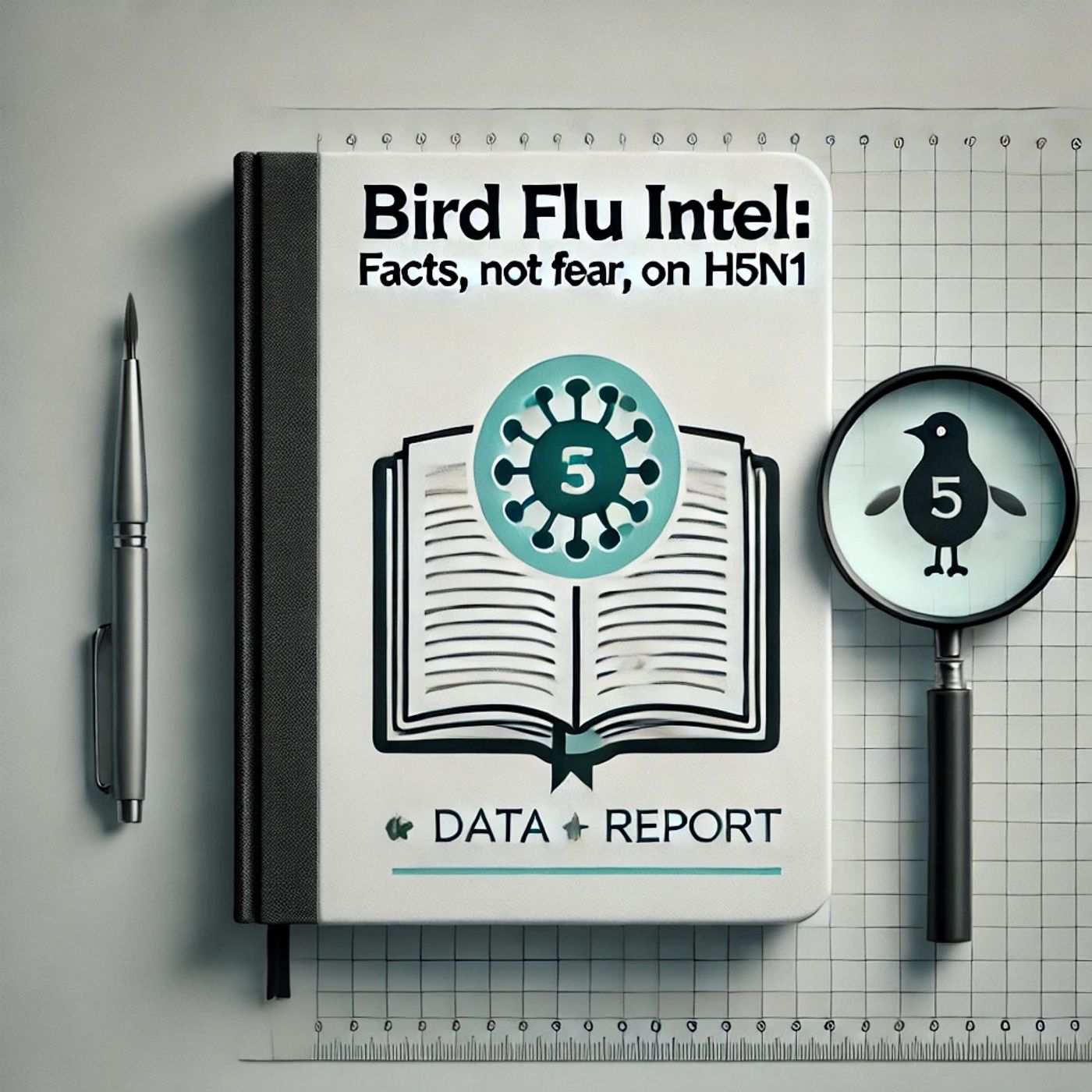Podcast Episode Details
Back to Podcast Episodes
H5N1 Bird Flu: Separating Fact from Fiction with Expert Insights on Current Risks and Transmission
Welcome to Bird Flu Intel: Facts, Not Fear, on H5N1—a Quiet Please production. I am here to cut through the noise and bring you scientific insight to counter the myths about the H5N1 bird flu making headlines today.
Let’s start by tackling three common misconceptions.
First: “H5N1 bird flu is easily transmitted between people and could cause the next pandemic.” Current scientific evidence refutes this. According to the Centers for Disease Control and Prevention and the World Health Organization, nearly all human H5N1 infections since 2024 have stemmed from direct contact with infected birds or livestock, not from another person. There has been no evidence of sustained human-to-human transmission in the US or globally. The risk to the general public remains low—but is higher for people with occupational exposure, like poultry and dairy workers.
Second: “If H5N1 is found in cows or poultry, their products like milk or eggs automatically become unsafe.” Here is what you need to know: Both the FDA and CDC report that proper pasteurization and cooking eliminate H5N1 in dairy and eggs. The FDA specifically highlights that consuming unpasteurized or raw milk remains risky, not because of rampant bird flu in grocery systems, but because any raw product can carry pathogens if animals are infected. Pasteurized products in the food supply remain safe for consumption.
Third: “A few bird flu deaths mean anyone who catches H5N1 will likely die.” The numbers tell a different story. While historic outbreaks in countries like Cambodia have had high fatality rates, the current US situation is different: Since 2024, human cases in the US have almost all been mild and recovered fully. There was a single reported death in 2025 in Louisiana—a person with pre-existing health conditions who had direct exposure to sick birds. This tragic case is an outlier, not the norm. Most recent cases in both the US and abroad have involved mild symptoms, not severe disease.
So how does misinformation about bird flu spread? Social media, viral posts, and sensational news stories often magnify rare events or misunderstand scientific reports, leading to fear and stigma. Once myths circulate, they can shape public behavior in harmful ways—causing people to avoid safe foods, neglect reliable prevention practices, or even panic-buy supplies unnecessarily.
Here are some tools for sorting fact from fiction: First, check the source—is it from trusted public health organizations like the CDC, WHO, or your local health department? Second, look for scientific consensus. Credible sites will list references, describe levels of risk honestly, and update their information when new data emerges. Beware of headlines that use alarming language without details or cite anonymous experts.
Today’s scientific consensus is clear: H5N1 bird flu in the US and most of the world is largely an animal health issue with a low risk to the general public. Human cases remain rare and almost all stem from direct animal exposure. Surveillance and prevention efforts are robust, and agencies are well-prepared to respond to any new developments.
However, there are questions science is still working on. Researchers are monitoring how H5N1 adapts to mammals, tracking for any changes that might enhance human-to-human transmission, and investigating how best to prevent spillover events. Scientists are also studying the virus’s impact on food production and wildlife.
Thank you for joining us for this episode of Bird Flu Intel: Facts, Not Fear, on H5N1. Come back next week for more myth-busting science. This has been a Quiet Please production. For more, check out Quiet Please dot AI. Stay informed, stay rational, and stay safe.
For more http://www.quietplease.ai
Get the best deals https:
Published on 2 weeks, 5 days ago